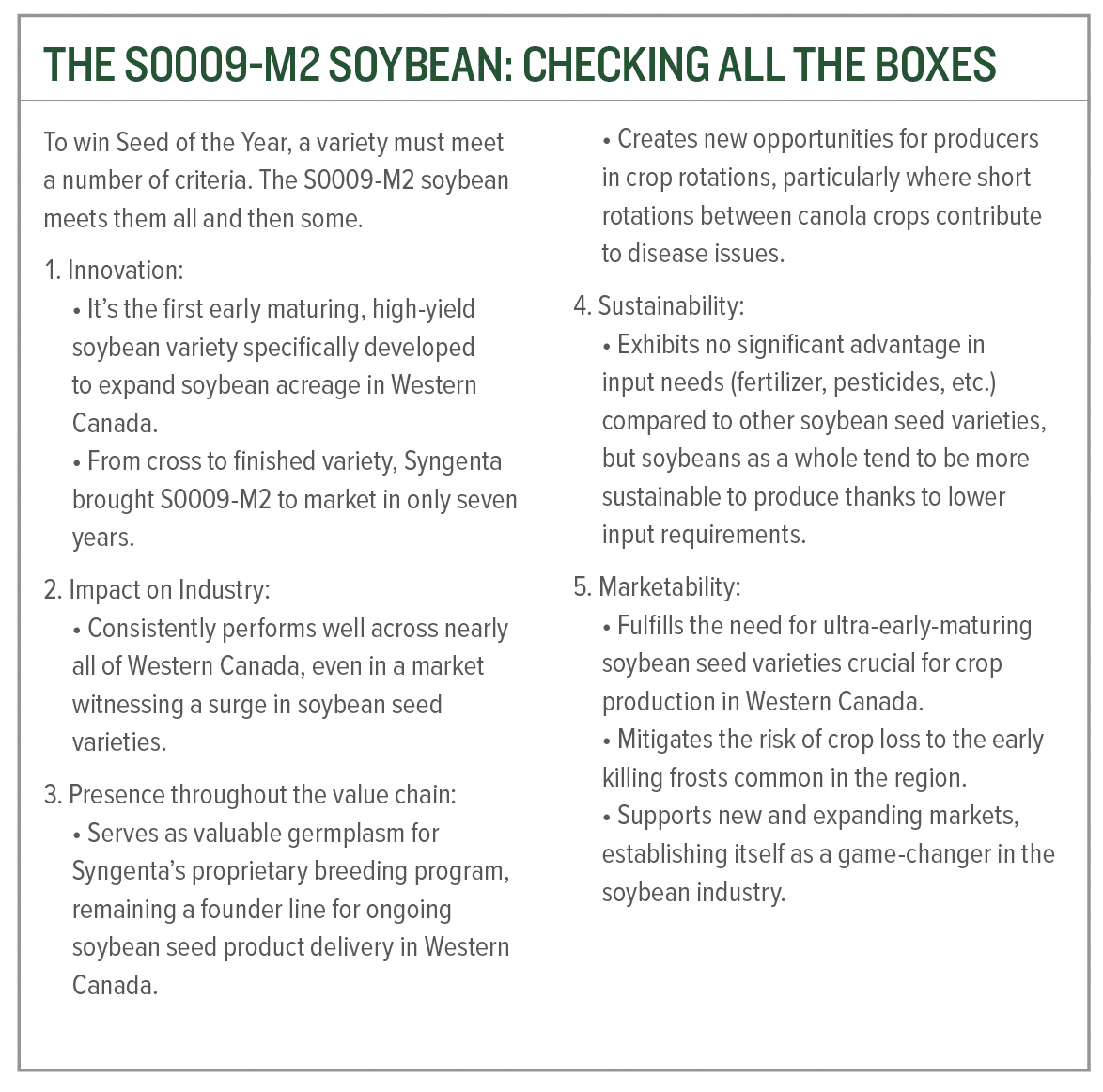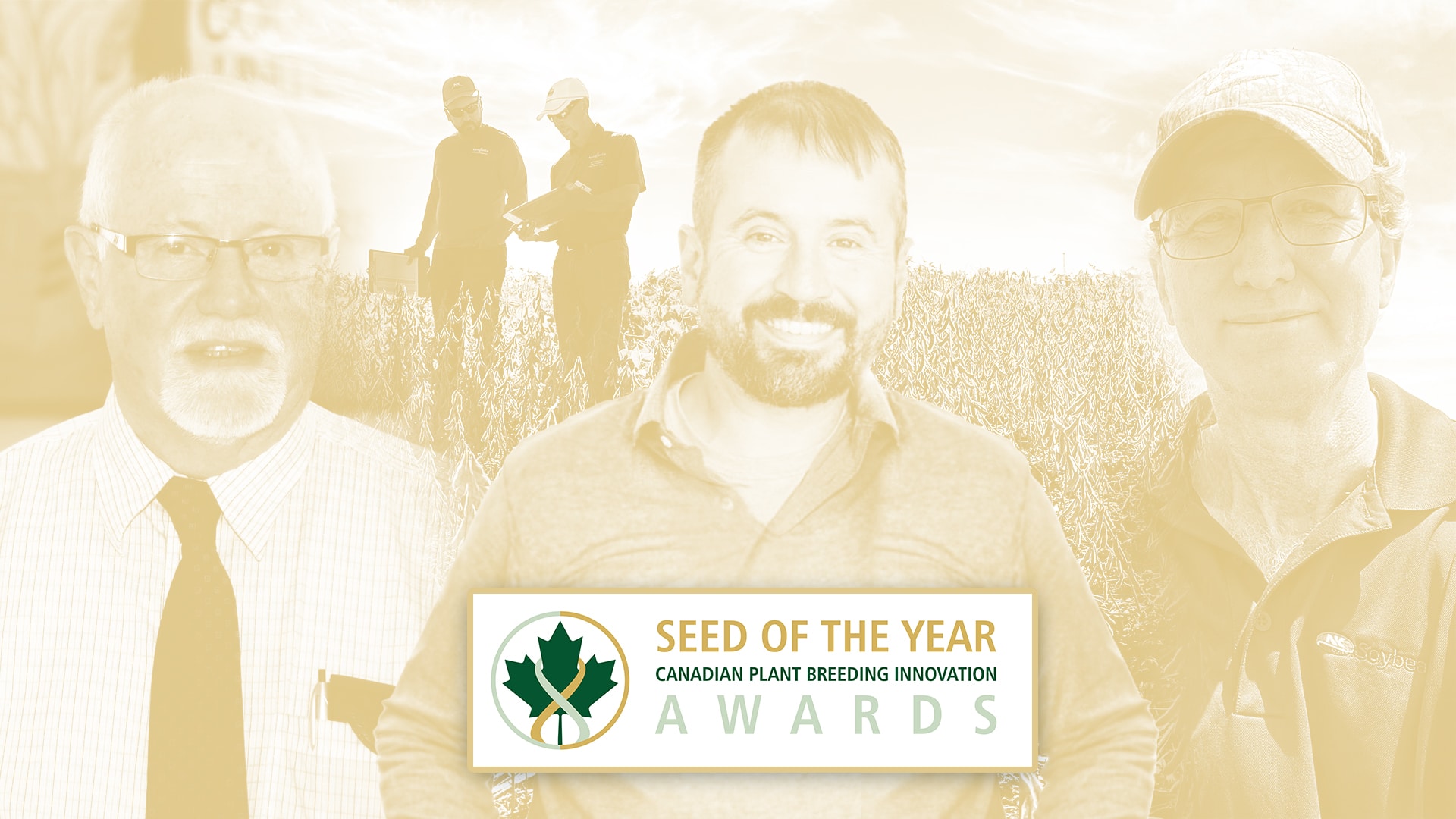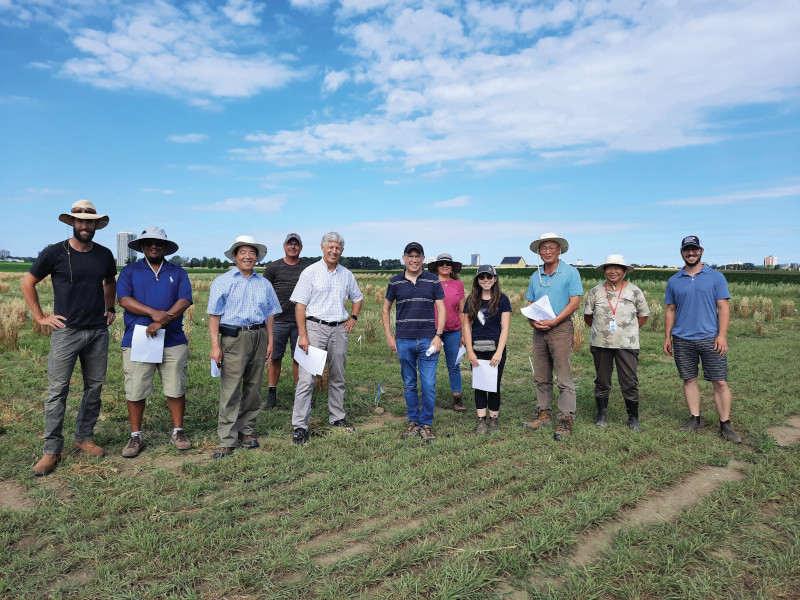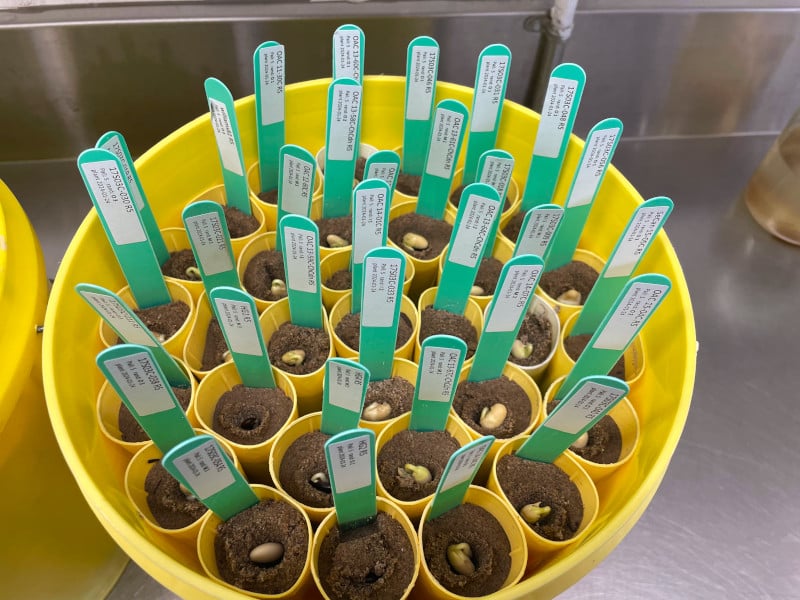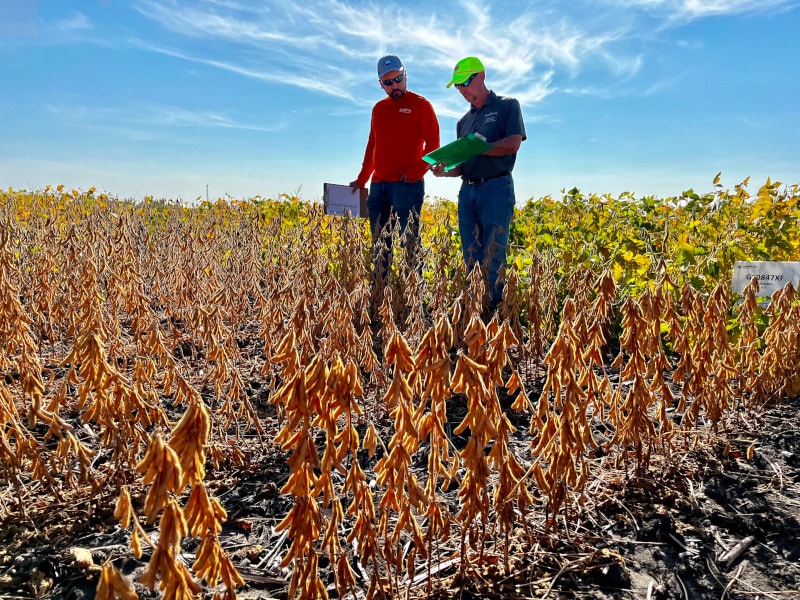
As the S0009-M2 soybean from Syngenta Canada sails off into the sunset, its creators talk about why it’s so deserving of the 2024 Seed of the Year Award.
Sometimes a variety that has little potential in one half of the country ends up seeing massive success in the other half.
The S0009-M2 soybean from Syngenta Canada is one of those. The variety, which is being phased out after nearly a decade of fanfare, stands as a game-changer that made soybeans a reality in the West. For exactly that reason, the variety is being awarded Seed World Canada’s Seed of the Year honour for 2024.
S0009-M2 was developed from Syngenta Canada’s germplasm and an early line acquisition from AAFC’s soybean research program. Recognizing the importance of external germplasm, the Syngenta Canada team was made up of David Lee, his mentor Don McClure and Jake Delheimer — with a bit of help from Elroy Cober from AAFC in Ottawa.
The pivotal moment of S0009-M2’s genesis occurred at Syngenta’s Plattsville, Ont. research station, a facility that focuses on R&D of both crop protection products and seeds.
“It was there that we identified a single plant that ultimately led to the creation of the variety. From that point onward, there was no looking back — it performed exceptionally well,” Lee remembers.
An intriguing characteristic was S0009-M2’s consistently robust pod cluster on the top of the plant, a distinctive feature that proved useful for growers. Spotting seven or eight pods clustered at the top signaled the success of the soybean field.
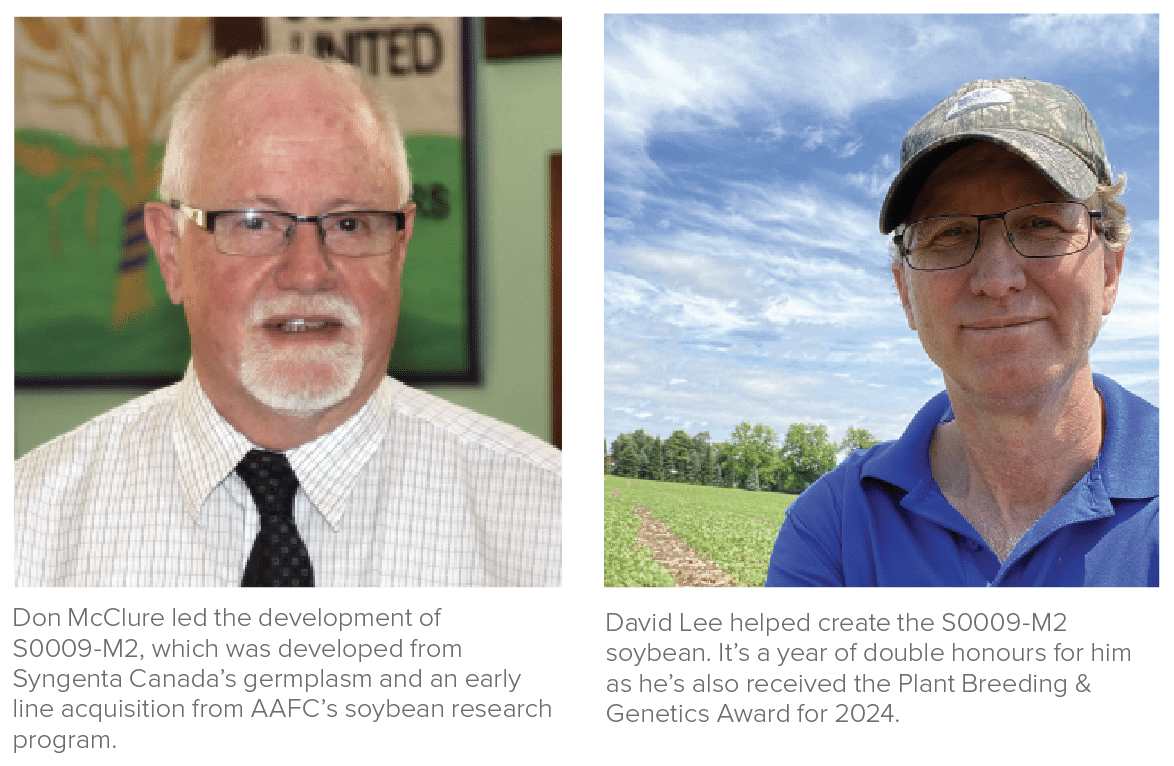
Equally fascinating was the occurrence of five-bean pods, a rarity when the line was developed. This uniqueness added another layer to the variety’s success.
“Prior to this variety, encountering a five-bean pod was a stroke of luck as three-to-four-bean pods were the norm,” Lee adds.
Once introduced to the marketplace, S0009-M2 went on to become a top seller. It has moved well over 500,000 bags in Manitoba alone since it was registered in 2015.
It’s success almost didn’t happen, given that the variety almost died on the stem, so to speak. In 2014, a year before it was registered, it was ranked lowest of all 42 varieties in Syngenta’s research trials in terms of its suitability for growing in the East. However, the breeding team, thinking more broadly than Eastern Canada alone, recognized that the early maturity of the line would be ideal for the West.
S0009-M2 made it possible for growers in western Manitoba, Saskatchewan, and Alberta to grow a profitable crop of soybeans in geographies where soybeans were typically damaged by early frost, Delheimer notes. It’s able to do this via its early maturity combined with solid yield performance, good agronomics and a competitive disease package.
“As the demand for soybean meal and oil sourced from Canada continues to grow, S0009-M2 has opened up a broader sourcing geography for the Canadian producer and end user,” Delheimer says.
S0009-M2 has also served as a new opportunity for producers needing a crop to add to their rotations. This has had impact on areas where short rotations between canola crops have caused disease issues.
Of course, no variety lasts forever. With newer options coming up in the ranks, 2024 will likely be the final season for seed of S0009-M2 to be sold to growers.
“S0009-M2 has served as valuable germplasm and will continue to be a founder line in the breeding project aimed at continuing to deliver soybean seed products for Western Canada,” Delheimer adds.
